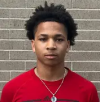Google Ohio State Falls to No. 6 Louisville, 1-0 - Ohio State | Official Athletics Website
- News
- 0 Replies
Ohio State Falls to No. 6 Louisville, 1-0 - Ohio State | Official Athletics Website
via Google News using key phrase "Buckeyes".
Ohio State Falls to No. 6 Louisville, 1-0 Ohio State | Official Athletics Website
Continue reading...
via Google News using key phrase "Buckeyes".
Ohio State Falls to No. 6 Louisville, 1-0 Ohio State | Official Athletics Website
Continue reading...




